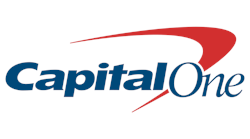Security Industry Financing Field Guide
It is a time of rapid change in the security industry. Technology that was state-of-the-art just five years ago seems old fashioned today. At the same time, security dealer/integrator businesses that were once industry mainstays are in a state of transformation, as owners retire or sell to other companies.
It takes a high level of vigilance to keep up with these changes; however, with the challenges of change come opportunities as well. Businesses with the foresight to seize these opportunities will not just survive but thrive – if they have the right tools at their disposal.
One such tool is leverage. As I have stressed in my previous columns (see www.securityinfowatch.com/12328468 and www.securityinfowatch.com/12351290), responsible leverage is the most efficient way to expand into new territories, adopt new technology, or explore new business models. In addition, it can also facilitate the transfer of ownership, a common stumbling block for many security businesses. Leverage also enables a company to jumpstart its growth through carefully chosen mergers or acquisitions.
Some security professionals hesitate, concerned about the perceived risks that debt brings; in fact, the opposite is true. Companies with a non-amortizing, revolving line of credit are more agile and less vulnerable to disruption than those without.
Others may hold back if they imagine the process of securing a revolver to be difficult and time-consuming; however, owners who work with established security industry lenders find that the process is clear-cut and manageable. Furthermore, by joining forces with an established partner, they find they can gain fresh insight into their business and their industry.
Non-Amortization Creates Flexibility and Simplicity
The funding vehicle of choice for the security industry is a revolving line of credit – also called a “revolver.” The revolver is non-amortizing, which means borrowers are not required to pay off principal until the revolver matures.
This arrangement has a number of advantages. One consequence is that the loan’s commitment – the maximum amount of committed capital that a lender provides – typically does not decrease throughout the life of the loan (usually between three and five years). Companies can use such a credit facility for an acquisition, pay down their line of credit, and then use it again. By contrast, the commitment on a term loan declines permanently as it is paid down. To borrow more money, borrowers typically must apply for another loan.
The freedom to pay down a loan without affecting its commitment has other benefits as well. It enables borrowers to proactively manage their loan balance, which reduces their interest expense. In addition, a line of credit can be used for multiple purposes. During its tenure, a borrower can apply the credit facility to a range of activities, from supporting organic growth and funding capital expenditures to investing in infrastructure. Term loans, on the other hand, are typically tied to specific purposes.
Availability: A Brake on Indebtedness
A key feature of the line of credit that makes it a prudent choice for security companies is availability – a measure of how much of its commitment a company can tap. Typically, a company can access a multiple – called the advance rate – of the recurring monthly revenue (RMR) used as collateral. For most security companies, the advance rate is in the mid-20s. For example, if a company has $1 million in RMR and advance rate of 25, the most it could borrow is $25 million, even with a commitment of $35 million.
Availability grows as a company grows. If RMR increases, funds available in the revolver will increase as well, up to the commitment limit. The amount a company actually borrows, the balance, may be less than or equal the available funds.
In certain situations, lenders will consider other collateral when computing availability. For instance, companies that expect a substantial payment for a large commercial installation may be able to use a portion of their accounts receivables as collateral.
Understanding the Process
The actual process of securing a revolving line of credit is relatively straightforward. Lenders request high-level financial information from companies that express interest in a loan, including year-end and the most recent trailing 12-month financial statements. They will also want to get a snapshot the borrower’s RMR, asking for such information as an RMR roll-forward report, RMR segmentation report (top customers, commercial/residential, service type, etc.), and high-level projections. In addition, lenders usually ask for executive biographies to get a sense of the leadership team’s experience.
Lenders use this information to populate their models and discuss the opportunity internally with their committees, and if the result is favorable, they issue a proposal. Among other items, the proposal details the commitment amount, the advance rate, the tenure, pricing, any relevant financial covenants, and conditions precedent to closing. These could include the minimum opening excess availability position as well as due diligence, collateral field audit and certain legal documentation requirements.
Borrowers should take their time considering the proposal. To ensure they understand all the details, they should ask the lender to present the proposal and respond to any questions. The proposal also serves as a reality check, helping borrowers determine if their plans for future growth are realistic.
Once borrower and lender come to terms, the lender will commence confirmatory due diligence. When this analysis is complete, the lender will secure the necessary internal approvals and then prepare the formal loan document. This entire process – from signing the term sheet to closing – typically lasts between 30 and 45 days, depending on the flow of information and the complexity of the business or transaction.
A borrower will rarely have to repeat this process in its entirety if they continue to use the same lender. A revolver can have a built-in accordion commitment, which enables companies to request an increase in their commitment without requiring an amendment. In addition, 12 to 18 months before a revolver is set to mature, borrowers can work with their lender(s) to request an extension. Overall, revolvers are designed to be simple to manage and responsive to a borrower’s needs.
Finding the Right Lender
The first step in securing a revolver is stepping back and deciding that you really need one. For a company looking for a rainy-day fund, there may be better alternatives. But when a company has a clear strategic mandate that requires an infusion of capital, a revolving line of credit can be a great solution.
Many banks offer revolvers, but not all banks serve the security market. The best way to find a lender is to talk to fellow alarm association members, intermediaries familiar with the space, or industry lawyers to get their perspectives and recommendations. Companies can also conduct additional online research.
Create a short list of candidates, then give candidate banks a call and ask for references from other security industry borrowers. Conducting due diligence at this point in the process is paramount.
In addition to choosing a lender with solid industry credentials and a great reputation, it only makes sense for companies to select a lender with the capacity to grow with their business. In addition, it can be very helpful to choose a lender who can offer other useful financial products like treasury management or corporate cards.
As a general guideline, companies should start a conversation with their selected lender 60 to 90 days before they intend to deploy the revolver. Starting too early risks loss of momentum and could cause duplication of effort if they are asked to submit updated financials. Starting later means the process could be rushed.
An experienced security industry lender can provide valuable industry insights, in addition to financing. When companies work with a knowledgeable lender they are able to see their business – and their business plans – through the eyes of an expert. Bankers can give companies an idea now their business stacks up against the state of the art and point to best practices they can implement. That fresh perspective in itself can be almost as valuable as the funding lenders provide.
Revolvers in Action
For a Tuck-in Acquisition
- Background: The owner of a company with $500,000 in RMR has decided to sell; looking for $20 million (40x valuation).
- Problem: Friendly competitor with $500,000 in RMR would like to purchase; however, local bank will not provide sufficient proceeds and is requiring personal guarantees from all parties (including seller).
- Solution: Obtain a line of credit and use the existing RMR as collateral. Fund $20.0 million on the combined $1,000,000 in RMR (funded advance multiple of ~20x).
For Organic Expansion
- Background: A commercial alarm company is trying to expand RMR by offering new video monitoring solution to new customers.
- Problem: Customers are unwilling to pay full price up-front for high-resolution cameras needed for systems.
- Solution: Utilize a line of credit that can be collateralized by existing RMR to make equipment purchases. Offer discount to up-front equipment and installation price in exchange for higher ARPU and long-term contracts.
For a Minority Buy-Out
- Background: $525,000 in RMR. Partnership in which one partner (35% owner) has decided to retire and would like to sell the company at a valuation of $20.0 million (38x RMR).
- Problem: Remaining partner does not want to sell entire business and does not have sufficient personal funds to buy out retiring partner.
- Solution: Obtain a line of credit; use the RMR as collateral. Fund $7.0 million (35% of $20.0 million) on the line of credit (funded advance multiple of ~13x) and use the proceeds to buy out the partner.
John Robuck is Managing Director of the Security Finance lending practice within Capital One Bank's Commercial and Specialty Finance business. To request more info, visit www.securityinfowatch.com/12070948.






